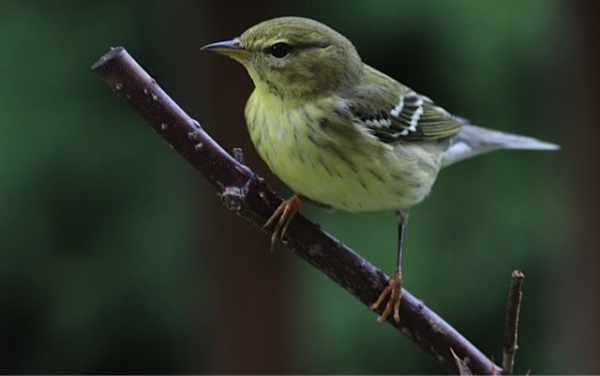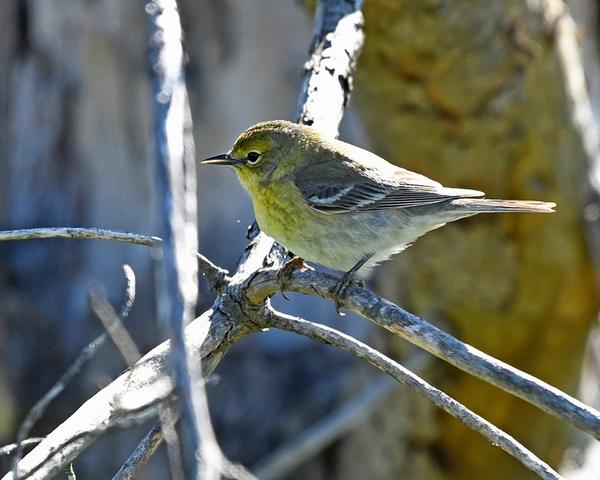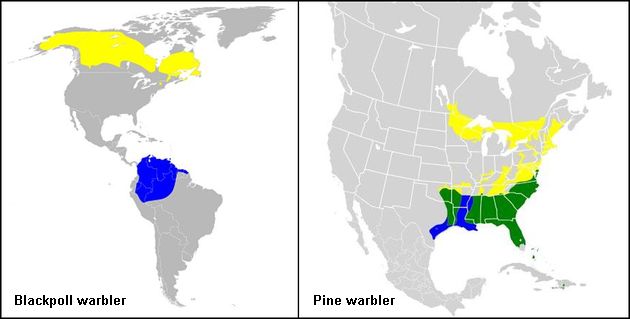
As warblers migrate through Pennsylvania we find them feeding together in mixed flocks during the day. Does that mean they were traveling together overnight? Maybe not. Warblers often have very different breeding and wintering destinations, making it hard to coordinate their trips.
Here are two extreme examples. Blackpoll and pine warblers look similar but you can’t find two more different migration strategies. Their breeding and wintering grounds are as far apart as it gets.
The blackpoll warbler, above, is a long distance champion who travels 7,000 miles from his breeding grounds in North America’s boreal spruce and fir forests to wintering grounds in South America. To shorten the trip some of them fly non-stop for 88 hours, for 2,100 over the Atlantic Ocean, to reach South America’s shore.
The pine warbler, below, never travels that far. His breeding and winter ranges are completely contained within North America from southern Canada to Florida and he’s found year-round in the southern U.S. Pine warblers breed in parts of Pennsylvania.

The maps below — blackpoll (left), pine warbler (right) — tell the story in three colors: Yellow is breeding range, Blue is wintering range, Green is year-round.

As you can see, blackpolls leapfrog over the pine warbler’s range.
Though I saw blackpoll and pine warblers in a mixed flock in Perry County last weekend, they probably weren’t traveling together.
(photo of blackpoll warbler by Marcy Cunkelman; pine warbler by Anthony Bruno; maps from Wikimedia Commons: blackpoll and pine)
The migrations that these little blackpoll warblers make is absolutely incredible. 88 hours non-stop… blows my mind!